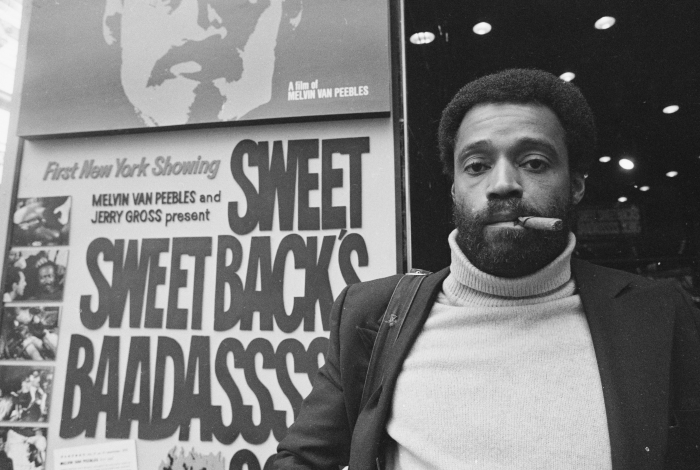
America’s consistent and evil campaign to remove African Americans from American history continues to demonstrate the level of racism that this country still has for Black people.
So it’s to the Academy Museum of Motion Pictures credit that the first museum exhibition of its kind— Regeneration: Black Cinema 1898–1971 —will offer the public a chance to learn more about how African American performers and filmmakers have helped define cinema in the United States.
The exhibition , which opens on August 21, explores the achievements and challenges of both independent production and the studio system, from cinema’s infancy in the 1890s through the height of the civil rights movement.
“This landmark exhibition seeks to restore lost chapters of American film history as it elevates the contributions of Black artists to present a more inclusive story,” said Jacqueline Stewart, who served on the exhibition’s advisory panel before becoming chief artistic and programming officer of the Academy Museum of Motion Pictures.
“We are incredibly proud to present Regeneration, an exhibition that demonstrates how the Academy Museum introduces new scholarship, offers a more expansive vision of American film history, and encourages public dialogue about the past and present of film as an art form and a social force.”
Regeneration comprises seven galleries dedicated to exploring the social and political situation of Black Americans at the dawn of cinema in the United States; the representation of Black people in early cinema from 1897 to 1915; pioneering independent Black filmmakers such as Oscar Micheaux and “race films,” made for Black audiences from the 1910s to the 1940s; Black music in American film, including “soundies” and Black musicals; and the daring and pioneering paths Black film directors blazed during the civil rights movement.
Highlighted objects on view include never-before-shown costume drawings from “Carmen Jones” (1954); promotional glamour portraits of dozens of leading Black film stars; costumes worn by Lena Horne in “Stormy Weather” (1943), and Sammy Davis, Jr. in “Porgy and Bess” (1959); cowboy boots worn by Herb Jeffries in Harlem on the Prairie (1937); a 1920s camera from the Norman Film Company, a producer of race films; a Mills Panoram machine from the 1940s; tap dance shoes from the Nicholas Brothers; and one of Louis Armstrong’s trumpets.
The exhibition opens with two versions of a clip from “Something Good – Negro Kiss” (1898), showcasing vaudeville performers Saint Suttle (1870–1932) and Gertie Brown (1882–1934) in what appears to be one of the earliest examples of on-screen affection by Black actors. Unknown prior to 2016, when it was discovered in the United States, another version of the clip was recently found in Norway and will also be presented. This silent work counters the popular stereotypical and racist caricatures of Black performance at the time.
The next gallery highlights “race films,” which were independently made productions with all-African American casts created between 1916 and the 1940s. These films often offered more nuanced stories and roles for Black actors than mainstream studio productions. A wall featuring vibrant movie posters demonstrates the scale and range of genres of these films, and spotlights companies and filmmakers in different geographic regions of the US. This section is amplified by materials on segregated movie theaters,
alongside an interactive US map highlighting the volume of race film productions, and a curated selection of existing race film clips shown in a specially designed in-gallery theater.
The “Stars and Icons” gallery recognizes numerous African American performers in Hollywood from the 1920s through the late 1950s, many of whom achieved mainstream notoriety, although a significant number did not. A spotlight on Hattie McDaniel’s Oscar win and complicated fame is also presented in this gallery.

The exhibition culminates with a section devoted to freedom movements, demonstrating how advances in the African American freedom struggle impacted the film industry. A section on World War II showing propaganda films and newsreels offers insight into that critical era of the civil rights movement.
An assortment of photographs, drawings, posters, and magazines highlights how actors such as Harry Belafonte, Ruby Dee, Ossie Davis, Sidney Poitier, and Paul Robeson. As well as writers Lorraine Hansberry and James Baldwin, who used their platforms to fight for social and racial justice.
Regeneration’s final gallery pays tribute to five African American directors active from the 1960s onward—Madeline Anderson, Robert L. Goodwin, William Greaves, Gordon Parks, and Melvin Van Peebles—and shows how their unique perspectives allowed them to create documentaries, independent films, and Hollywood productions that have helped pave the way for current and future filmmakers of color.
Regeneration will be accompanied by a range of film series and screenings, including world-premieres of films newly restored by the Academy Film Archive—including a title once thought lost—and a series guest-programmed by African American Film Archive creator and curator Maya Cade.
Presented in conjunction with Regeneration is Isaac Julien’s “Baltimore,” a three-channel installation that will be located in the Academy Museum’s Warner Brothers Gallery. Julien’s film is an homage to writer, director, producer, and actor Melvin Van Peebles (1932–2021), whose 1971 film, “Sweet Sweetback’s Baadasssss Song,” ushered in the blaxploitationera, a genre of low-budget films created for African American audiences during the 1970s.
Artist Isaac Julien appropriates the look and feel of blaxploitation films, using Baltimore’s streets and museums as locations. Julian created this piece while filming “Baadasssss Cinema” (2002), a documentary on blaxploitation. Julien is a world-renowned British installation artist, filmmaker, and distinguished professor of the arts at the University of California, Santa Cruz.







